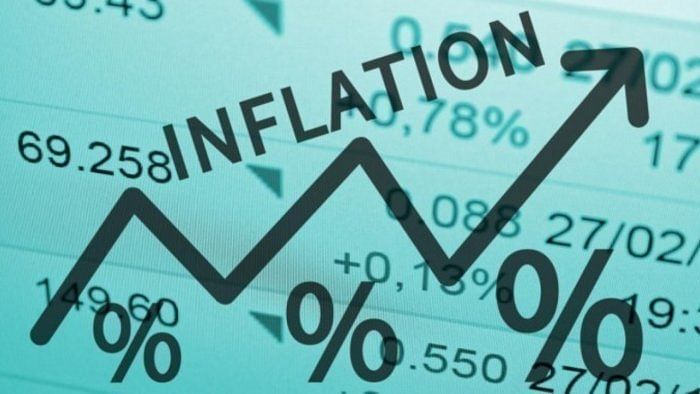
Last year (2022) was marked by rate hikes. It was something that market analysts predicted would happen following the worldwide business recovery in 2021 after the Covid-19 pandemic. What is remarkable, though, is that the battle with inflation persists even a year after the central banks began raising interest rates. While we may have passed the peak of inflation, recent data suggests that the fight against inflation is far from over, and that a few more hikes may be necessary to accelerate the reduction in inflation levels.
The target inflation rate of the United States Federal Reserve for stable prices in the US economy is 2 per cent. The table below shows the trend of inflation and rate hikes in the US economy since January 2022:
Similarly, the target consumer price index (CPI) inflation level, as decided by the Union government, is 4 per cent. The table below constitutes the trend of CPI Inflation numbers for the Indian economy and the repo rate as decided by the Reserve Bank of India (RBI):
From the above two graphs it is clear that while a declining inflation rate is a positive sign, taking it to target levels would need further intervention from the central banks. Let us try to understand what further rate hikes might imply for various sectors of the economy.
In the Indian context, the repo rate is the rate at which the RBI lends short-term funds to other banks. This is a way by which the RBI can impact the level of economic activities. Increasing or hiking the repo rate would require banks to pay more interest to the RBI, which they, in turn, would recover from the loans made to their customers.
Impact On Banks, NBFCs
These rate hikes have a direct impact on the lending business. However, what will be interesting to see is the trend of net interest margins (NIM) of the lenders in forthcoming quarters. Net interest margin is the difference between the interest income generated by financial institutions on loans given and the interest paid on its deposits to their lenders. The NIM is an indicator of a bank’s profitability and growth. Banks and non-banking financial companies (NBFCs) generally borrow funds on a short-term basis (as short-term loans have lower interest rates than long-term loans) and roll over their loans at every expiry. The effect of rate hikes on the funds borrowed by these banks is often immediate, following each rate hike. Yet, the rate hike that is passed on to borrowers has a lagged effect. This effect is apparent in the NIMs of the lenders.
We can see that when the RBI did the first rate hikes in the current cycle in Q1FY23, the net interest margin of SBI and HDFC saw a dip since the hike could not be transferred to the borrowers immediately, but the margin recovery can be seen in subsequent quarters once the rates hikes were passed on.
However, when interest rates rise, the rates on customer deposits also ascend. The question is whether deposit rates would rise in tandem with the repo rate, resulting in a margin reduction for lenders. What lenders do next with fixed deposit rates is dependent on individual banks' liquidity and capital requirements. As all lenders have raised their fixed deposit rates in the recent year, those with a sound liquidity position may not raise their fixed deposit rates further, but instead pass on the rate hike to their loans, thereby boosting their interest margins even further.
Fintech is another sector that is heavily dependent on lending demand. These companies earn commission by facilitating the lending to the customers, contrary to lending from their balance sheet. This is a volume-based business that typically thrives in a low-interest-rate environment. Hence, constantly rising lending rates could further challenge their business operations.
Indirect Impact
When the cost of borrowing rises induced by rate hikes, it impacts the demand for loans from banks and the NBFCs. Real estate is one industry that is particularly susceptible to such sudden rate hikes. While companies in the sector have denied any demand concerns due to rising rates thus far, the rise in repo rates to their highest levels in the last four years may influence future demand. Increasing interest rates reduce housing affordability, particularly for lower- and middle-income families. Another effect of the rate hike is a delay in the launch of new projects and ventures. Fresh capital expenditure is also a concern in all sectors that require investments, because the return on incremental capital expenditure must be considerably greater than existing borrowing costs.
In the case of service-based sectors such as IT, where the demand depends on the macroeconomic environment of the US and European markets, the flow of fresh deals remains a significant roadblock since the clients of these IT companies will look to prune their costs further due to rising interest rates and inflation.
Conclusion
We are currently undergoing a situation in which the central banks are walking on thin ice. Raising interest rates while attempting to allay recession fears is a tough path to tread. Nonetheless, as compared to more developed economies, the Indian economy is currently better positioned in terms of predicted GDP growth. Yet, the RBI will need to strike a balance in the coming months to keep the growth engine running while also addressing inflation.
[Parimal Ade (Twitter: @AdeParimal) is Founder, and Gaurav Jain (Twitter: @gaurav28jain) is Co-Founder, Investyadnya.in.]
Disclaimer: The views expressed above are the author’s own. They do not necessarily reflect the views of DH.